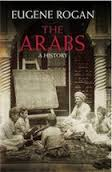Title: The
Genre: Short Story
Year: 1911
Pages: 20
Origin: read on the iPhone
Nod Rating: 3 nods out of 5
No matter this, it remains a tribute to the writer G.K.
Chesterton. A writer of which the Worm had little knowledge until deciding to
read a piece of work in his honour. Not a long read, you understand, but rather
a taster of his capability as a writer. Therefore, the rather useful app –
Short Stories – came in handy by providing the Worm with The Secret Garden.
This short story is chiefly concerned with the character of
Father Brown, a reoccurring person in a lot of Chesterton’s fiction. It is a
murder mystery, displaying Chesterton’s ability in creating a well crafted
story that did not fail to engage. Rather than discuss plot points, the Worm
recommends the link below to be hurriedly clicked and the story consumed.
The Worm has decided on obtaining a few more reads of
Chesterton’s hand. Not directly related to The Secret Garden, but more with
Chesterton’s biography and great wealth of quotes. Many of these relate to
religion and society, but the one that took the Worm’s fancy had a distinctly
ordinary and humorous feel to it: ‘Let a man walk ten miles steadily on a hot
summer’s day along a dusty English road, and he will soon discover why beer was
invented.’ The Worm has since moved from Chesterton’s tribute of a street, but
he is glad to have a reflected glory of association with the once world famous
writer.









